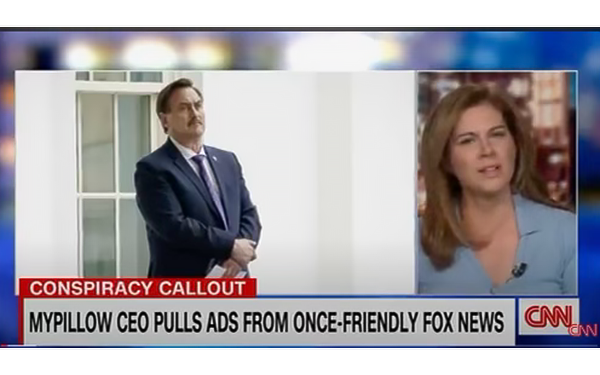
Should brand-tough advertisers be running
schedules on TV news networks, especially this year? Especially now, with a mere 30 days to go before the Presidential election?
Not really. Sensitivity about TV content
is still high.
Over 80% of U.S. marketing executives have concerns about advertising their brands during elections, according to Madison and Wall’s 2024 Ad Spend
Forecast.
And that isn’t new. Major TV advertising brands hardly buy any of the big three 24/7 cable TV news networks these days -- CNN, Fox Business Channel or
MSNBC.
Perhaps brands have a slightly easier time with TV news when it comes to more limited broadcast TV news content -- the prime-time evening news shows -- and more
straightforward news coverage.
advertisement
advertisement
But on 24/7 cable news networks there can be wild, off-the-charts commentary that can easily spill over into fringe content areas.
The concern is that any advertising break where brand messaging resides would cast a negative view from longtime news consumers.
TV news networks' powerful video
messages can speak volumes for consumers -- good and bad. But they also can affect print-based media publishers when it comes to display and other advertising.
At a recent
industry event, Jana Meron, vice president of revenue operations/data for The Washington Post, said that during certain periods advertisers “blocked” more than 40% of the
publisher’s ad inventory because of brand-safety concerns.
There is no comparable number for networks. But it is surely a high one.
The only major
brand advertiser associations for TV news networks come from major pharmaceutical marketers touting any number of prescription drugs targeting much of their 60-year-old-plus audience.
The downside is that critics would say brands are missing out on remaining highly viewed “premium” live TV content where the likes of Fox News Channel and MSNBC regularly
sit high up on the list of the most-viewed cable TV networks.
Fox News has been primarily in the number one spot (when top-rated sports programming isn’t airing). MSNBC regularly
grabs a top-three or top-five prime-time viewing position.
But now, after decades one wonders: Shouldn’t consumers and brand media executives be getting more
desensitized to all of this, considering nonstop high-intensity political content?
Also think of the long-time older TV viewers -- those TV viewers age 60-plus -- are
very loyal to their brands. Marketers say it is tough to shake them loose from their longtime consumer habits. So why advertise?
What deeper research is for brands so
that news content -- especially traditional TV news content -- can become a bit more accessible these days?